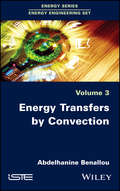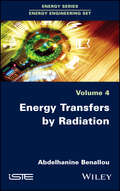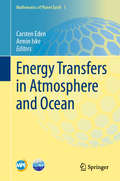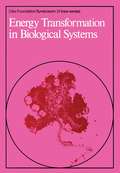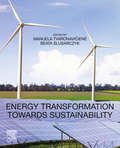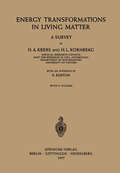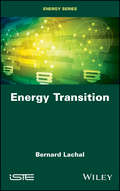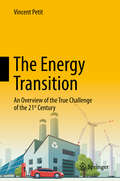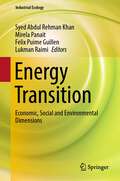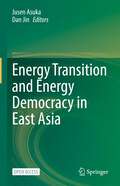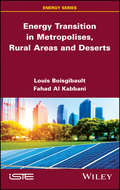- Table View
- List View
Energy transfer in a metal and non-metal (large print)
by RnibThis diagram shows the difference between the transfer of energy in a metal and a non-metal. There is a locator dot shown, which will be at the top left of the page when the image is the correct way up. Each of the two images is surrounded by a dashed line image border. There is a key to the symbols used at the bottom of the page. The particles have lines around them that represent the vibration of the particles. The image at the top of the page is labelled 'a', it shows the particles in a metal. The metal contains free electrons that spread out and collide with other free electrons and ions in the cooler parts of the metal. The image at the bottom of the page is labelled 'b', it shows the particles in a non-metallic solid. All the electrons are held in the atoms. Energy transfer takes place when the atoms vibrate and shake each other.
Energy transfer in a metal and non-metal (UEB contracted)
by RnibThis diagram shows the difference between the transfer of energy in a metal and a non-metal. There is a locator dot shown, which will be at the top left of the page when the image is the correct way up. Each of the two images is surrounded by a dashed line image border. There is a key to the symbols used at the bottom of the page. The particles have lines around them that represent the vibration of the particles. The image at the top of the page is labelled 'a', it shows the particles in a metal. The metal contains free electrons that spread out and collide with other free electrons and ions in the cooler parts of the metal. The image at the bottom of the page is labelled 'b', it shows the particles in a non-metallic solid. All the electrons are held in the atoms. Energy transfer takes place when the atoms vibrate and shake each other.
Energy transfer in a metal and non-metal (UEB uncontracted)
by RnibThis diagram shows the difference between the transfer of energy in a metal and a non-metal. There is a locator dot shown, which will be at the top left of the page when the image is the correct way up. Each of the two images is surrounded by a dashed line image border. There is a key to the symbols used at the bottom of the page. The particles have lines around them that represent the vibration of the particles. The image at the top of the page is labelled 'a', it shows the particles in a metal. The metal contains free electrons that spread out and collide with other free electrons and ions in the cooler parts of the metal. The image at the bottom of the page is labelled 'b', it shows the particles in a non-metallic solid. All the electrons are held in the atoms. Energy transfer takes place when the atoms vibrate and shake each other.
Energy Transfer Processes in Condensed Matter (Nato Science Series B: #114)
by Baldassare DibartoloThis book presents an account of the NATO Advanced Study Institute on "Energy Transfer Processes in Condensed Matter", held in Erice, Italy, from June 16 to June 30, 1983. This meeting was organized by the International School of Atomic and Molecular Spectroscopy of the "Ettore Majorana" Centre for Scientific Culture. The objective of the Institute was to present a comprehensive treatment of the basic mechanisms by which electronic excitation energy, initially localized in a particular constituent or region of a condensed material, transfers itself to the other parts of the system. Energy transfer processes are important to such varied .fields as spectroscopy, lasers, phosphor technology, artificial solar energy conversion, and photobiology. This meeting was the first encounter of this sort entirely dedicated to this important topic. A total of 65 participants came from 47 laboratories and 16 nations (Belgium, Czechoslovakia, F.R. of Germany, France, Greece, India, Ireland, Israel, Italy, The Netherlands, Poland, Portugal, Switzerland, Turkey, United Kingdom, and the United States of A America). The secretaries of the course were: Ms. Aliki Karipidou for the scientific aspects and Mr. Massimo Minella for the admini strative aspects of the meeting.
Energy Transfer Processes in Polynuclear Lanthanide Complexes (Springer Theses)
by Shun OmagariThis book describes the luminescence mechanism of polynuclear lanthanide complexes, focusing on energy transfer processes using a combination of experimental and theoretical approaches. Lanthanide complexes show intense luminescence from the lanthanide ion through sensitization by the organic ligands. The high chromaticity of the emission and the long lifetimes of the complexes are particularly attractive for applications such as organic light-emitting diodes and bioprobes. Polynuclear lanthanide complexes (coordination polymers and clusters) have attracted considerable interest for functionalization by energy transfer between lanthanide ions. At the same time, such extra processes complicate the luminescence mechanism, hindering the rational design of functional polynuclear lanthanide complexes. Firstly, the book explains the principle of the theoretical methods, and then describes the concentration-quenching mechanism in coordination polymers. It also examines the effect of intrinsic spin–orbit coupling arising from lanthanide ions on the ligand-to-lanthanide energy transfer efficiency and the mechanism of back energy transfer (the opposite of sensitizing energy transfer) in lanthanide clusters. This sets the stage for the final topic: the suppression of back energy transfer by energy transfer between lanthanide ions in lanthanide clusters, which is of critical importance, showing that the lanthanide clusters can be considered a new generation of functional and efficient luminescent material and could also provide a breakthrough in lanthanide photophysics.
Energy transferred through the ear (large print)
by RnibThis is a partly cutaway cross section diagram of a sound wave travelling through the outer and inner ear. It is labelled with numbers going from left to right up and down the page from the image of the ear. There is a locator dot shown, which will be at the top left of the page when the image is the correct way up. The entrance to the ear canal is shown on the centre left of the page. Moving right from here you will find the eardrum, the bones of the middle ear, the cochlea and the auditory nerve. The direction of travel of the sound wave through the ear is indicated by three right-pointing arrows in the ear canal. The sound wave is shown as a series of vertical lines in the ear canal. The stages in the path of the sound wave through the ear are indicated by numbered labels on the diagram: 1. Sound vibrations enter and travel along the ear canal 2. Vibrations in the air pass to the eardrum 3. Vibrations in eardrum pass to bones in the middle ear 4. Vibrations in middle ear pass to the cochlea 5. Cochlea converts sound to electrical energy 6. Electrical energy travels to the brain along auditory nerve and is "heard"
Energy transferred through the ear (UEB contracted)
by RnibThis is a partly cutaway cross section diagram of a sound wave travelling through the outer and inner ear. It is labelled with numbers going from left to right up and down the page from the image of the ear. There is a locator dot shown, which will be at the top left of the page when the image is the correct way up. The entrance to the ear canal is shown on the centre left of the page. Moving right from here you will find the eardrum, the bones of the middle ear, the cochlea and the auditory nerve. The direction of travel of the sound wave through the ear is indicated by three right-pointing arrows in the ear canal. The sound wave is shown as a series of vertical lines in the ear canal. The stages in the path of the sound wave through the ear are indicated by numbered labels on the diagram: 1. Sound vibrations enter and travel along the ear canal 2. Vibrations in the air pass to the eardrum 3. Vibrations in eardrum pass to bones in the middle ear 4. Vibrations in middle ear pass to the cochlea 5. Cochlea converts sound to electrical energy 6. Electrical energy travels to the brain along auditory nerve and is "heard"
Energy transferred through the ear (UEB uncontracted)
by RnibThis is a partly cutaway cross section diagram of a sound wave travelling through the outer and inner ear. It is labelled with numbers going from left to right up and down the page from the image of the ear. There is a locator dot shown, which will be at the top left of the page when the image is the correct way up. The entrance to the ear canal is shown on the centre left of the page. Moving right from here you will find the eardrum, the bones of the middle ear, the cochlea and the auditory nerve. The direction of travel of the sound wave through the ear is indicated by three right-pointing arrows in the ear canal. The sound wave is shown as a series of vertical lines in the ear canal. The stages in the path of the sound wave through the ear are indicated by numbered labels on the diagram: 1. Sound vibrations enter and travel along the ear canal 2. Vibrations in the air pass to the eardrum 3. Vibrations in eardrum pass to bones in the middle ear 4. Vibrations in middle ear pass to the cochlea 5. Cochlea converts sound to electrical energy 6. Electrical energy travels to the brain along auditory nerve and is "heard"
Energy Transfers by Conduction
by Abdelhanine BenallouWhile the topic of heat and mass transfer is an old subject, the way the book introduces the concepts, linking them strongly to the real world and to the present concerns, is particular. The scope of the different developments keeps in mind a practical energy engineering view.
Energy Transfers by Conduction
by Abdelhanine BenallouWhile the topic of heat and mass transfer is an old subject, the way the book introduces the concepts, linking them strongly to the real world and to the present concerns, is particular. The scope of the different developments keeps in mind a practical energy engineering view.
Energy Transfers by Convection
by Abdelhanine BenallouWhether in a solar thermal power plant or at the heart of a nuclear reactor, convection is an important mode of energy transfer. This mode is unique; it obeys specific rules and correlations that constitute one of the bases of equipment-sizing equations. In addition to standard aspects of convention, this book examines transfers at very high temperatures where, in order to ensure the efficient transfer of energy for industrial applications, it is becoming necessary to use particular heat carriers, such as molten salts, liquid metals or nanofluids. With modern technologies, these situations are becoming more frequent, requiring appropriate consideration in design calculations. Energy Transfers by Convection also studies the sizing of electronic heat sinks used to ensure the dissipation of heat and thus the optimal operation of circuit boards used in telecommunications, audio equipment, avionics and computers.
Energy Transfers by Convection
by Abdelhanine BenallouWhether in a solar thermal power plant or at the heart of a nuclear reactor, convection is an important mode of energy transfer. This mode is unique; it obeys specific rules and correlations that constitute one of the bases of equipment-sizing equations. In addition to standard aspects of convention, this book examines transfers at very high temperatures where, in order to ensure the efficient transfer of energy for industrial applications, it is becoming necessary to use particular heat carriers, such as molten salts, liquid metals or nanofluids. With modern technologies, these situations are becoming more frequent, requiring appropriate consideration in design calculations. Energy Transfers by Convection also studies the sizing of electronic heat sinks used to ensure the dissipation of heat and thus the optimal operation of circuit boards used in telecommunications, audio equipment, avionics and computers.
Energy Transfers by Radiation
by Abdelhanine BenallouInside industrial furnaces and combustion chambers, energy is essentially exchanged by radiation. It is through the same mechanism that the energy emitted by the Sun spreads through different media to reach the Earth. Developing a sound understanding of the laws underlying energy exchanges by radiation is therefore essential, not only for establishing design equations for industrial equipment, but also for an optimal harvesting of solar energy and a better understanding of climate change phenomena such as the greenhouse effect. Energy Transfers by Radiation establishes the basic laws and equations which support the quantification of energy fluxes transferred between surfaces for situations similar to those usually encountered in industrial processes or in solar energy applications.
Energy Transfers by Radiation
by Abdelhanine BenallouInside industrial furnaces and combustion chambers, energy is essentially exchanged by radiation. It is through the same mechanism that the energy emitted by the Sun spreads through different media to reach the Earth. Developing a sound understanding of the laws underlying energy exchanges by radiation is therefore essential, not only for establishing design equations for industrial equipment, but also for an optimal harvesting of solar energy and a better understanding of climate change phenomena such as the greenhouse effect. Energy Transfers by Radiation establishes the basic laws and equations which support the quantification of energy fluxes transferred between surfaces for situations similar to those usually encountered in industrial processes or in solar energy applications.
Energy Transfers in Atmosphere and Ocean (Mathematics of Planet Earth #1)
by Carsten Eden Armin IskeThis book describes a recent effort combining interdisciplinary expertise within the Collaborative Research Centre “Energy transfers in atmosphere and ocean” (TRR-181), which was funded by the German Research Foundation (DFG). Energy transfers between the three dynamical regimes – small-scale turbulence, internal gravity waves and geostrophically balanced motion – are fundamental to the energy cycle of both the atmosphere and the ocean. Nonetheless, they remain poorly understood and quantified, and have yet to be adequately represented in today’s climate models. Since interactions between the dynamical regimes ultimately link the smallest scales to the largest ones through a range of complex processes, understanding these interactions is essential to constructing atmosphere and ocean models and to predicting the future climate. To this end, TRR 181 combines expertise in applied mathematics, meteorology, and physical oceanography. This book provides an overview of representative specific topics addressed by TRR 181, ranging from - a review of a coherent hierarchy of models using consistent scaling and approximations, and revealing the underlying Hamiltonian structure - a systematic derivation and implementation of stochastic and backscatter parameterisations - an exploration of the dissipation of large-scale mean or eddying balanced flow and ocean eddy parameterisations; and - a study on gravity wave breaking and mixing, the interaction of waves with the mean flow and stratification, wave-wave interactions and gravity wave parameterisations to topics of a more numerical nature such as the spurious mixing and dissipation of advection schemes, and direct numerical simulations of surface waves at the air-sea interface. In TRR 181, the process-oriented topics presented here are complemented by an operationally oriented synthesis focusing on two climate models currently being developed in Germany. In this way, the goal of TRR 181 is to help reduce the biases in and increase the accuracy of atmosphere and ocean models, and ultimately to improve climate models and climate predictions.
Energy Transformation in Biological Systems (Novartis Foundation Symposia #31)
by David W. FitzSimons G. E. W. WolstenholmeThe Novartis Foundation Series is a popular collection of the proceedings from Novartis Foundation Symposia, in which groups of leading scientists from a range of topics across biology, chemistry and medicine assembled to present papers and discuss results. The Novartis Foundation, originally known as the Ciba Foundation, is well known to scientists and clinicians around the world.
Energy Transformation towards Sustainability
by Manuela Tvaronavičienė Beata ŚlusarczykEnergy Transformation towards Sustainability explores how researchers, businesses and policymakers can explore and usefully improve energy systems and energy consumption behavior, both to reflect the reality of climate change and related environmental degradation and to adapt to the expanding periphery of renewable energy technologies. It introduces the reader to a suite of potential policy pathways to the necessary transformation in societal energy consumption, usage and behavior. Solutions discussed include energy efficiency, energy security, the role of political leadership, green public policy, and the transition to renewable energy sources. International contributions address the range and depth of current research from a position of advocacy for ‘energy stewardship’ as the driver of this transformation. Case studies illustrate the range of various countries to diminish energy use. Finally, policy avenues are covered in depth.Reviews the interrelationship between economic growth, energy consumption and climate changeUses a wide variety of case studies to support practical implementation across national energy systemsHighlights a wide spectrum of urgent issues, including threats related to energy use and secure and sustainable developmentContains contributions that reflect a breadth and depth of scholarship from international backgrounds
Energy Transformations in Living Matter: A Survey
by Hans A. Krebs H.L. KornbergThis survey was written at the invitation of the Editors of the "Ergebnisse der Physiologie". Its aim is to present the more recent progress in the know ledge of biological energy transformations. Since it was intended for a review journal, the reader was taken to be familiar with the fundamentals of current biochemistry, as described in the standard textbooks. It was not the object to compile an extensive collection of facts. The survey is limited to aspects of wider interest, and the main emphasis has been on the general unifying principles which emerge from the great mass of detailed ob servations. The article is reprinted in the hope that it may be useful in this form to advanced students and research workers in biochemistry and related subjects. H. A. KREBS H. L. KORNBERG 2 Table of Contents Page 1. The Key Position of Adenosine Triphosphate . . . 213 2. The Three Phases of Foodstuff Degradation. . . . 213 3. The Energy-Yielding Steps of Intermediary Metabolism 215 4. The Build-up of Phosphate Bond Energy ..... 221 5. Alternative Pathways of Anaerobic Fermentation in Micro-organisms. 227 6. Alternative Pathways of Glucose Oxidation . 237 7. The Path of Carbon in Photosynthesis . . . 243 8. Utilization of Energy for Chemical Syntheses 249 9. Control of Energy-Supplying Processes . . . 262 10. A Special Feature of ATP as an Energy Store. 271 11. Evolution of Energy Transforming Mechanisms 273 Appendix by K. BURTON Free Energy Data of Biological Interest 27S References . . . . . . . . . . . . . . .
Energy Transition
by Bernard LachalAlthough most people are aware of the value of developing new energy technologies, the importance of assessing such technologies is only just beginning to be recognized in full. This book, illustrated by real-life examples, fulfils two main objectives. Firstly, it provides an in-depth summary of energy system evaluation methods, the result of decades of work in this area, for the use of researchers, engineers and anybody else interested in the energy sector. Secondly, the vicious cycle of neglect towards in situ evaluation is broken. This neglect is due to its unjust reputation for being “thankless work”: longwinded, expensive, difficult to exploit and undervalued. By scientifically organizing experience acquired over more than 30 years, Energy Transition highlights the considerable usefulness of the approach, not only economically, but also from a human standpoint.
Energy Transition
by Bernard LachalAlthough most people are aware of the value of developing new energy technologies, the importance of assessing such technologies is only just beginning to be recognized in full. This book, illustrated by real-life examples, fulfils two main objectives. Firstly, it provides an in-depth summary of energy system evaluation methods, the result of decades of work in this area, for the use of researchers, engineers and anybody else interested in the energy sector. Secondly, the vicious cycle of neglect towards in situ evaluation is broken. This neglect is due to its unjust reputation for being “thankless work”: longwinded, expensive, difficult to exploit and undervalued. By scientifically organizing experience acquired over more than 30 years, Energy Transition highlights the considerable usefulness of the approach, not only economically, but also from a human standpoint.
The Energy Transition: An Overview of the True Challenge of the 21st Century
by Vincent PetitAgainst the backdrop of rapid advances in the energy sector, this book provides a concise overview of the complex challenges in the energy paradigm today, which revolve around the seemingly unsolvable energy equation. The author, an experienced energy professional, combines the various aspects of the energy transition into a single perspective. While highlighting a number of salient problems, he also explores grounds for optimism that these challenges can and will be met. After establishing the historical context, the book presents an analysis of today’s energy industry, different energy sources, countries and determinants of energy demand, supplementing all sections with a wealth of global and local data. It subsequently proposes measures to solve the energy equation and a roadmap for a sustainable future, based on more efficient energy use, cleaner energy production and advanced technologies.
Energy Transition: Economic, Social and Environmental Dimensions (Industrial Ecology)
by Syed Abdul Rehman Khan Mirela Panait Felix Puime Guillen Lukman RaimiThis book opens up a critical dimension of energy transition taking in account multidimensional challenges on economic, social and environmental fields. The book discusses the trends in the field of energy transition and evolving practices adopted by public authorities and companies for betterment of environment and society. The editors (4) identify directions and challenges involved in the energy transition. The novelty of this book is the multidisciplinary approach, being presented the economic, social and environmental challenges involved in the energy transition. The energy transition is accompanied by a complex process of changing attitudes and behaviors of energy consumers and producers. The consequences are profound not only economically and environmentally but also socially, renewable energy being a solution for energy poverty reduction and development of rural communities. Therefore, certain social and environmental problems generated by energy poverty are solved by using renewable energy. Moreover, the complexity of the phenomenon is presented not only in terms of the analysis of the main sources of renewable energy but also the ethical aspects involved in the use of sources such as biofuels. In the case of this source, the main problem is whether the use of certain agricultural products for the production of biofuels threatens food security, especially in rural areas. All categories of stakeholders must show responsibility and get involved in this complex process which requires a remarkable technical and financial effort. The energy transition can offer innovative solutions through which the impact of economic activity on the environment is minimized, and in this way, industrial ecology achieves its objectives to support sustainable development. The demands imposed by industrial ecology must shape not only the behavior of oil and gas companies but also of entities involved in the production and consumption of renewable energy. Given the negative externalities generated, companies in the fossil fuel sector have become increasingly socially responsible, their social and environmental performance (non-financial) being presented in detail in the annual sustainability reports to inform stakeholders. Therefore, this book is an important read not only for scholars, but also for those who are interested in ensuring an environmentally sustainable future taking in account energy transition challenges.
Energy Transition and Energy Democracy in East Asia
by Jusen Asuka Dan JinThis is an open access book.The subject of this book is to provide down-to-earth information on what kind of actions are being taken by the Government, Local community, Businesses, Researchers, NGOs on the energy transition in this region. It gives an updated picture of the energy transition in the East Asian countries, where the economic growth, as well as CO2 emission growth, is significant.This book focuses not only on the technological perspective of the energy transition but also on the relationship between democracy and energy transition. Readers of this book can understand what kind of international support and pressure is needed to promote the energy transition in this region.Since energy transition is needed not only for combatting climate change but also for the Green Recovery from the COVID-19 pandemic, publishing this book is very helpful to promote the Green Recovery and the Green New Deal world-widely.
Energy Transition in Metropolises, Rural Areas, and Deserts
by Louis Boisgibault Fahad Al KabbaniEnergy Transition in Metropolises, Rural Areas and Deserts presents detailed field studies of energy transition in Lille, Riyadh, Fayence, Bokhol, Ouarzazate and the Arabian Desert. It analyzes local actions and good practices – according to the resources and constraints involved – in the process of removing the obstacles to the transition. Solutions are sought for the right type of space for buildings, transport, industry and services, and targets are set for Europe, the Middle East and Africa as part of the Paris Climate Agreement. As a pedagogical tool, this book is aimed at not only politicians and professionals, but also any members of the public who wish to learn about changes in production and energy consumption.
Energy Transition in Metropolises, Rural Areas, and Deserts
by Louis Boisgibault Fahad Al KabbaniEnergy Transition in Metropolises, Rural Areas and Deserts presents detailed field studies of energy transition in Lille, Riyadh, Fayence, Bokhol, Ouarzazate and the Arabian Desert. It analyzes local actions and good practices – according to the resources and constraints involved – in the process of removing the obstacles to the transition. Solutions are sought for the right type of space for buildings, transport, industry and services, and targets are set for Europe, the Middle East and Africa as part of the Paris Climate Agreement. As a pedagogical tool, this book is aimed at not only politicians and professionals, but also any members of the public who wish to learn about changes in production and energy consumption.




